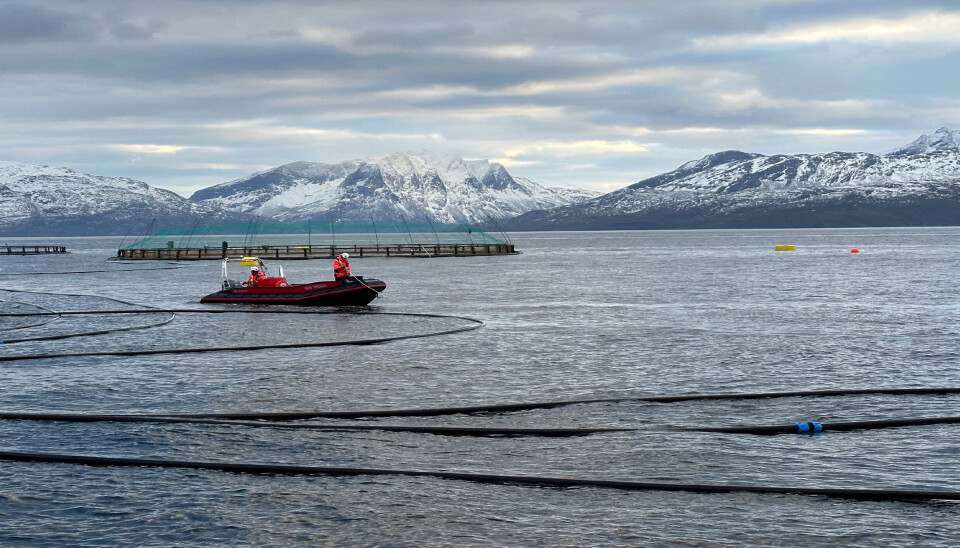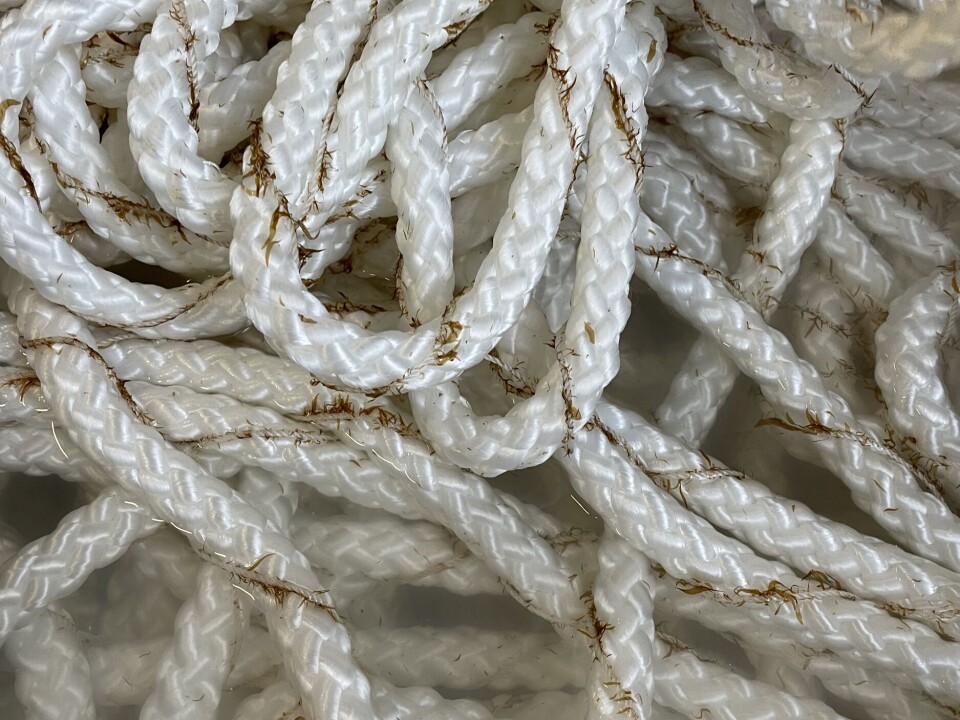
Can salmon and kelp help each other?
Combined farm projects looks at nutritional benefits for fish and seaweed
Salmon farmer Cermaq and kelp grower Folla Alger have teamed up with scientists to examine the practicalities and benefits of growing fish and seaweed on a combined sea site in Norway.
The Nordfoldleira site in Steigen in Nordland has salmon pens on the edges of the layout and space for kelp in the middle.
Research organisation SINTEF Ocean produced the first kelp for the site. The kelp seedlings are grown on strings which are then wrapped around thicker ropes to give the seaweed something for its roots, known as a holdfast, to attach to.
Value creation
“This area is already set aside for salmon, and by growing kelp on the same site in addition, we hope to be able to contribute to increasing value creation,” said SINTEF ocean research manager Silje Forbord. “This set-up allows us to use the nutrients released by the salmon in a sensible way by producing kelp, which can in turn be used as a raw material in new feed.
“We know that we can get up to 50% better kelp growth by cultivating it together with farmed fish. Now we will also look at whether there are more advantages to combined operation.”

Folla Alger has three sites for kelp cultivation in the Nordfoldfjord with a total annual production capacity of 7,500 tonnes of kelp (wet weight), as well as the site it is sharing with Cermaq, one of the world’s biggest Atlantic salmon farmers.
As part of the site-sharing project, which also involves Nord University and Norwegian University of Science and Technology (NTNU), the company will document positive and negative effects from this form of production, including environmental and fish health effects, and develop the optimal facility design.
Functional feed
Kelp doesn’t contain much protein, but among other things it is being examined as a source of fucoidan, which is sold as a dietary supplement for human use. Fucoidan has also shown health-promoting properties in various fish species and is very interesting as a functional ingredient in salmon feed, Folla Alger said on its website. Through the project, Folla Alger will develop new feed ingredients for salmon feed as well as production processes.
Truls Hansen, Cermaq’s production director in Nordland, said: “This is a very exciting project for us, where we can both utilise nutrients from the net pens as a resource, and we can obtain more alternative feed raw materials. It is good circular economy. In addition, the project contributes to increased local value creation and business development, which is very positive for everyone who lives and works here.”
Cultivating the kelp together with fish gives the seaweed better access to nutrition in seasons when there are naturally fewer nutrients in the sea in general, said SINTEF’s Forbod.
KelpCrofting and Mowi
The site at Steigen is believed to be the first to be established specifically for combined salmon and seaweed cultivation, but is not the first where seaweed is farmed near salmon.
In Scotland, sustainable seaweed farming company KelpCrofting has been growing seaweed next to Mowi Scotland’s salmon farm at Scalpay, near Skye, as part of a project run by the University of Stirling.
And Faroes and United States seaweed farmer Ocean Rainforest, which recently raised $6.2 million for expansion, grew its first crops next to a salmon farm operated by Bakkafrost before moving on to its own sites.
Better not together
Ocean Rainforest chief executive Olavur Gregersen has previously told Fish Farming Expert that the seaweed grew more quickly when fish were in the cages, because of increased nutrient levels in the water.
But he sees the future of fish farming and seaweed cultivation as separate to one another because of the volume of kelp required to run a profitable operation. He wants to farm much larger areas of up to 10 square kilometres, further from land, to make seaweed cultivation viable.
Kelp is one of the world’s fastest growing plants, and Ocean Rainforest can get two harvests a year from its crops by cutting the plant above the holdfast and letting it regrow.






















































